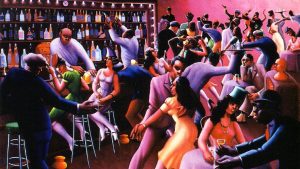
The Harlem Renaissance was a period of time for Black women to prosper and demonstrate their artistic abilities. Women like Jessie E. Fauset and Zora N. Hurston wrote books, while other women like Augusta Savage created sculptures. These Black women used these their different forms of art in order to critique America’s lack of protection towards Black issues such as education systems. Through their art, they addressed issues of slavery, colorism, injustices, and more. These were critical issues for Black women because they realized that Black America wasn’t being supported in a proper way. They used art as a form to rebel against white supremacy and hatred in a nonviolent and liberal way.

Jessie Fauset’s Plum Bun is a novel that was created and published in the 1920s. The main character is a woman named Angela Murray. She is a Black woman that looks however like a white person. This passage discusses the ideals of “passing” and how certain people reap the benefits of it or don’t based upon their identities. Plum Bun is a representation of the advantages that Angela hopes to obtain by her charm and talents within the white upper-class community. As a young girl, Angela plans to leave New York and get away from her siblings where she can deny her race that she was born into. Angela uses her skin tone as an advantage fit in and also survive within society. Being Black in the 1920s was difficult, especially because of issues such as colorism. In connection to a darker skinned Black girl, Angela clearly has an advantage. Given that this book discusses identity, this can be connected to American beauty standards. During this time the ideologies of beauty standards were if one had a light skin tone and long hair. Therefore, Angela changes her identity in full in order to navigate as a white woman in society. However, in Harlem, NY during the 1920s, Grandassa models challenged these ideals through modeling with their natural hair, embracing their skin tone, and confident personalities.
Zora Neale Hurston’s Their Eyes Were Watching God is about a Black woman who leaves her town in Florida, however, she returns. The town is suspicious about where she went in addition to what happened to her husband. Janie describes her life as a slave and being detached from her family because they live in poverty and hardship. Hurston was a very important leader of the Harlem Renaissance. As a Black women, she made so many powerful moves of motivation, during her time. In this passage, she addresses and critiques America in multiple ways. One main thing that Hurston addresses about America is that, if one is Black in America, more often than not it is difficult to escape and start a new life. To escape the backlash of discrimination is difficult. She hints at this when Janie goes to the south and suddenly returns. She allows us to understand that it is hard to be Black in America.

